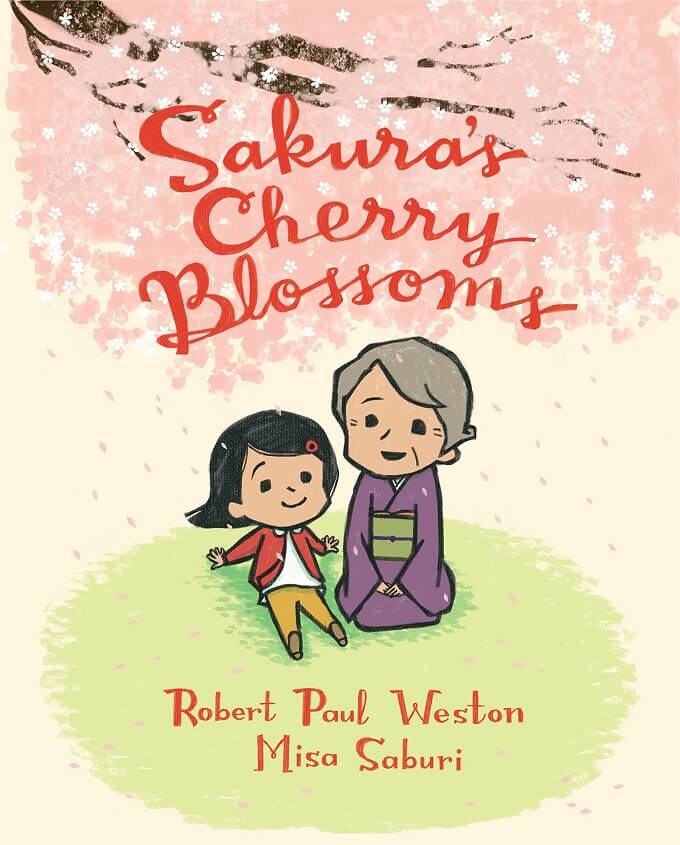23 Feb / Sakura’s Cherry Blossoms by Robert Paul Weston, illustrated by Misa Saburi [in Shelf Awareness]

 With a name that means “cherry blossom,” Sakura’s favorite time of the year is understandably spring, when her namesake blooms. Her grandmother gently nurtures her floral appreciation: “Together they sat/ in the shade of pink petals/… They ate bento box lunches./ They told each other stories.” Surrounded by beauty, Sakura’s Obaachan teaches her that “seeing these blossoms in bloom/ is always finest with friends.”
With a name that means “cherry blossom,” Sakura’s favorite time of the year is understandably spring, when her namesake blooms. Her grandmother gently nurtures her floral appreciation: “Together they sat/ in the shade of pink petals/… They ate bento box lunches./ They told each other stories.” Surrounded by beauty, Sakura’s Obaachan teaches her that “seeing these blossoms in bloom/ is always finest with friends.”
And then Sakura’s father begins “a new job in America,” moving the family away from Japan and Obaachan. Sakura’s initial loneliness gives way to new friendship with Luke, who shares with her his astral fascination: “‘Flowers are like stars,'” Sakura notices. “‘They blossom,/ they sparkle, and then/ they fade, so we treasure them/ because one day they vanish.'” So do grandparents, Sakura realizes too soon, and the family returns to Japan to say goodbye to her beloved Obaachan. When spring returns, Sakura will remember well her grandmother’s words, that “watching cherry blossoms bloom/ is always finest with friends.”
In his picture book debut, Sakura’s Cherry Blossoms, Robert Paul Weston pays homage to the cherry blossoms of Japan’s Mount Yoshino, the foothills of which he called home in his 20s. Using tanka – a five-lined, 5-7-5-7-7-syllabled traditional Japanese poem – Weston clearly channels his own wandering experiences (British-born, Canadian-raised, world-traveled, now London-domiciled) of navigating the challenges of new locations, languages, and cultures. Artist Misa Saburi, similarly attuned to East and West, illustrates a traditional hanami (cherry blossom viewing) and a “boisterous” morning arrival at school with equal fluency. Despite their own dislocations, Weston and Saburi’s artistic expressions align on the page in a complementary way, highlighting the bonding experiences of family, friendship, natural beauty and, of course, Sakura’s cherry blossoms.
Discover: For Sakura, the memories of her adored grandmother back in Japan and a new friendship with the boy next door help ease the challenges of moving across the world.
Review: “Children’s & Young Adult,” Shelf Awareness, February 23, 2018
Readers: Children
Published: 2018
